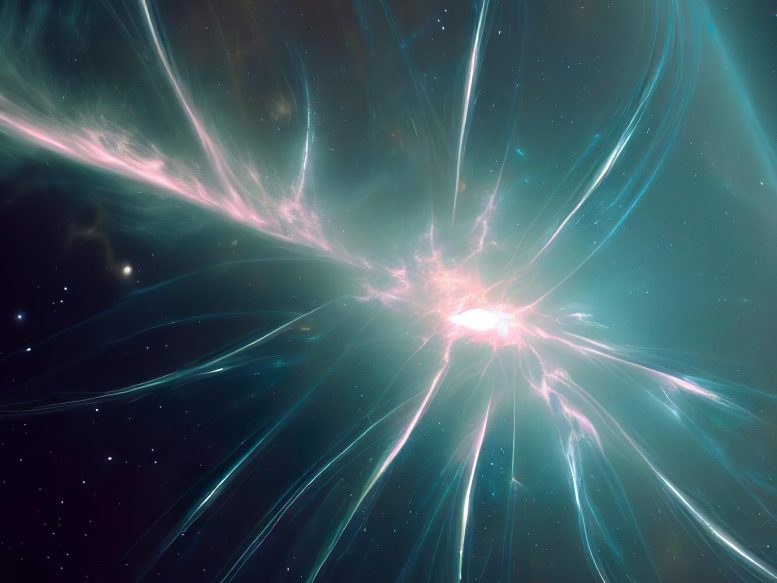
Astrophysicists have discovered a new group of horizontal filaments radiating from the supermassive black hole at the center of the Milky Way. This discovery could provide more insights into the black hole’s spin and accretion disk orientation, furthering our understanding of the galaxy’s nucleus. (Artist’s concept of cosmic filaments.)
Hundreds of horizontal filaments point toward our central supermassive black hole.
- New radio telescope images reveal hundreds of filaments along the galactic plane, each measuring 5 to 10 light-years in length
- These structures likely originated a few million years ago when outflow from our supermassive black hole interacted with surrounding materials
- Researcher: “I was actually stunned when I saw these”
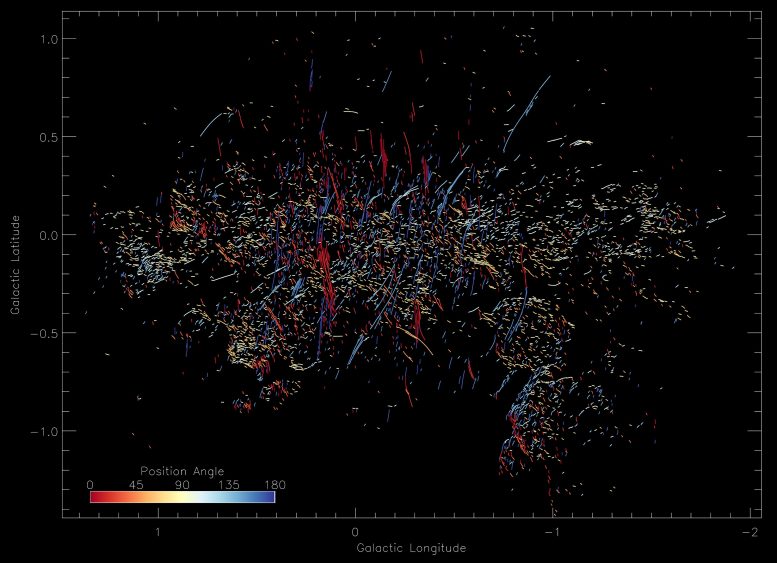
MeerKAT image of the galactic center with color-coded position angles of all filaments. Credit: Farhad Yusef-Zadeh/Northwestern University
An international team of astrophysicists has discovered something wholly new, hidden in the center of the Milky Way galaxy.
In the early 1980s, Northwestern University’s Farhad Yusef-Zadeh discovered gigantic, one-dimensional filaments dangling vertically near Sagittarius A*, our galaxy’s central supermassive black hole. Now, Yusef-Zadeh and his collaborators have discovered a new population of filaments — but these threads are much shorter and lie horizontally or radially, spreading out like spokes on a wheel from the black hole.
Although the two populations of filaments share several similarities, Yusef-Zadeh assumes they have different origins. While the vertical filaments sweep through the galaxy, towering up to 150 light-years high, the horizontal filaments look more like the dots and dashes of Morse code, punctuating only one side of Sagittarius A*.
The study was published on June 2 in The Astrophysical Journal Letters.
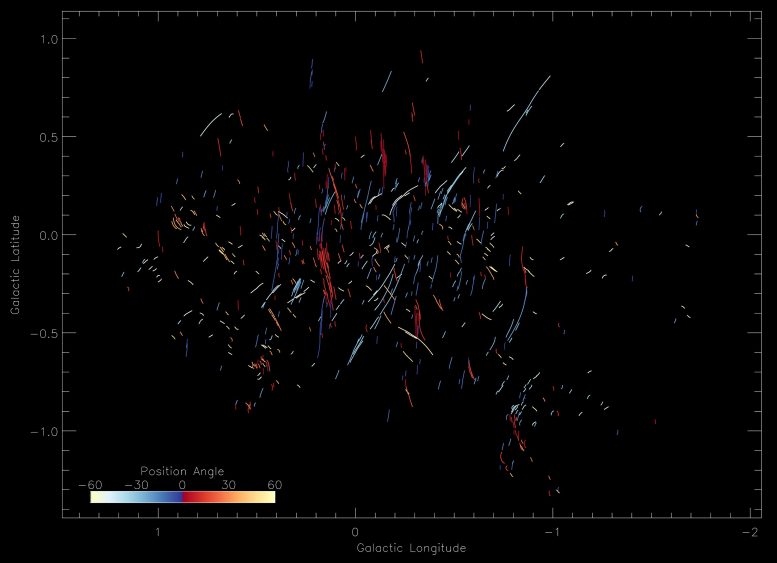
MeerKAT image of the galactic center with color-coded position angles of the long, vertical filaments. Credit: Farhad Yusef-Zadeh/Northwestern University
“It was a surprise to suddenly find a new population of structures that seem to be pointing in the direction of the black hole,” Yusef-Zadeh said. “I was actually stunned when I saw these. We had to do a lot of work to establish that we weren’t fooling ourselves. And we found that these filaments are not random but appear to be tied to the outflow of our black hole. By studying them, we could learn more about the black hole’s spin and accretion disk orientation. It is satisfying when one finds order in a middle of a chaotic field of the nucleus of our galaxy.”
An expert in radio astronomy, Yusef-Zadeh is a professor of physics and astronomy at Northwestern’s Weinberg College of Arts and Sciences and member of CIERA.
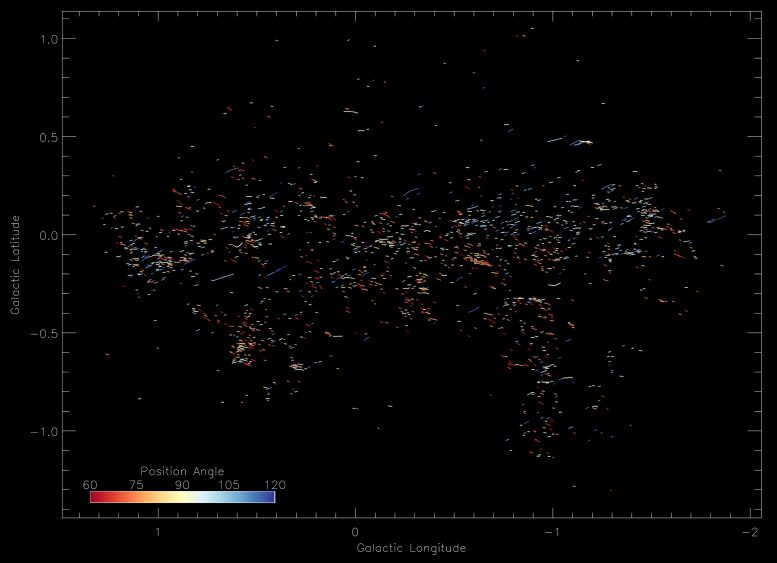
MeerKAT image of the galactic center with color-coded position angles of the short, radial filaments. Credit: Farhad Yusef-Zadeh/Northwestern University
Decades in the making
The new discovery may come as a surprise, but Yusef-Zadeh is no stranger to uncovering mysteries at the center of our galaxy, located 25,000 light-years from Earth. The latest study builds on four decades of his research. After first discovering the vertical filaments in 1984 with Mark Morris and Don Chance, Yusef-Zadeh along with Ian Heywood and their collaborators later uncovered two gigantic radio-emitting bubbles near Sagittarius A*. Then, in a series of publications in 2022, Yusef-Zadeh (in collaborations with Heywood, Richard Arent and Mark Wardle) revealed nearly 1,000 vertical filaments, which appeared in pairs and clusters, often stacked equally spaced or side by side like strings on a harp.
“I was actually stunned when I saw these. We had to do a lot of work to establish that we weren’t fooling ourselves.”
— Farhad Yusef-Zadeh, Astrophysicist
Yusef-Zadeh credits the flood of new discoveries to enhanced radio astronomy technology, particularly the South African Radio Astronomy Observatory’s (SARAO) MeerKAT telescope. To pinpoint the filaments, Yusef-Zadeh’s team used a technique to remove the background and smooth the noise from MeerKAT images in order to isolate the filaments from surrounding structures.
“The new MeerKAT observations have been a game changer,” he said. “The advancement of technology and dedicated observing time have given us new information. It’s really a technical achievement from radio astronomers.”
Horizontal vs. vertical
After studying the vertical filaments for decades, Yusef-Zadeh was shocked to uncover their horizontal counterparts, which he estimates are about 6 million years old. “We have always been thinking about vertical filaments and their origin,” he said. “I’m used to them being vertical. I never considered there might be others along the plane.”
While both populations comprise one-dimensional filaments that can be viewed with radio waves and appear to be tied to activities in the galactic center, the similarities end there.
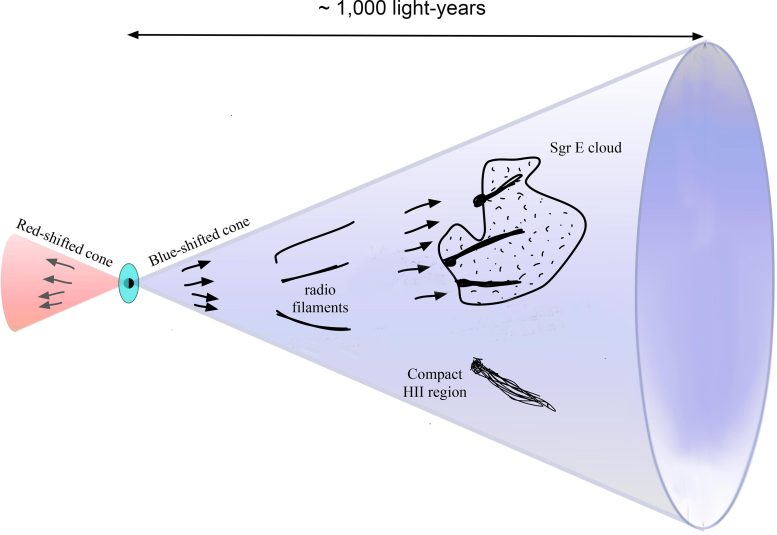
A schematic diagram of the outflow from Sagittarius A*, the Milky Way’s central supermassive black hole. Credit: Farhad Yusef-Zadeh/Northwestern University
The vertical filaments are perpendicular to the galactic plane; the horizontal filaments are parallel to the plane but point radially toward the center of the galaxy where the black hole lies. The vertical filaments are magnetic and relativistic; the horizontal filaments appear to emit thermal radiation. The vertical filaments encompass particles moving at speeds near the speed of light; the horizontal filaments appear to accelerate thermal material in a molecular cloud. There are several hundred vertical filaments and just a few hundred horizontal filaments. And the vertical filaments, which measure up to 150 light-years high, far surpass the size of the horizontal filaments, which measure just 5 to 10 light-years in length. The vertical filaments also adorn space around the nucleus of the galaxy; the horizontal filaments appear to spread out to only one side, pointing toward the black hole.
“One of the most important implications of radial outflow that we have detected is the orientation of the accretion disk and the jet-driven outflow from Sagittarius A* along the galactic plane,” Yusef-Zadeh said.
‘Our work is never complete’
The new discovery is filled with unknowns, and Yusef-Zadeh’s work to unravel its mysteries has just begun. For now, he can only consider a plausible explanation of the new population’s mechanisms and origins.
“We think they must have originated with some kind of outflow from an activity that happened a few million years ago,” Yusef-Zadeh said. “It seems to be the result of an interaction of that outflowing material with objects near it. Our work is never complete. We always need to make new observations and continually challenge our ideas and tighten up our analysis.”
Reference: “The population of the galactic center filaments: Position angle distribution reveal a degree-scale collimated outflow from Sgr A* along the galactic plane” by F. Yusef-Zadeh, R. G. Arendt, M. Wardle and I. Heywood, 2 June 2023, The Astrophysical Journal Letters.
DOI: 10.3847/2041-8213/acd54b
The study was supported by NASA (award number 80GSFC21M0002). The SARAO is a facility of the National Research Foundation, an agency of the Department of Science and Innovation.

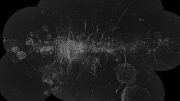


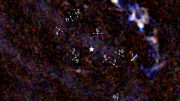




so what? useless to the billions of people suffering on earth.
Physics is boondoggle, space exploration and enormously expensive and polluting activity.
S*** for brains intellectual can go f themselves.
Might these filaments interact with dark matter?